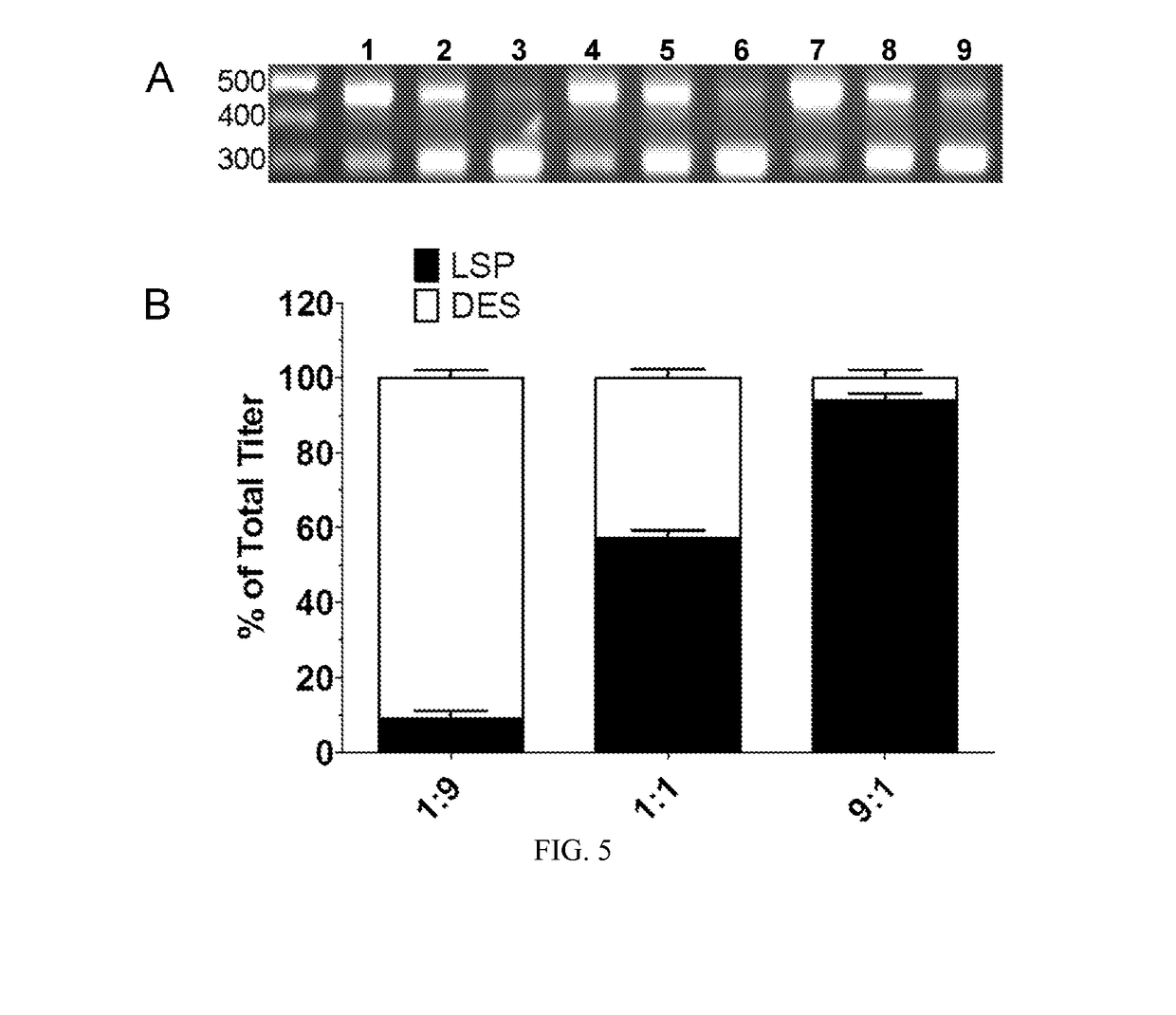Methods of packaging multiple adeno-associated virus vectors
a technology of adenovirus and vector, which is applied in the field of packaging multiple adenovirus vectors, can solve the problems of large amount of transgene to be effectively packaged into a single raav particle, and the difficulty of rapidly and cost-effectively producing mixed populations of raav particles, etc., and achieves the effect of efficient and inexpensiv
- Summary
- Abstract
- Description
- Claims
- Application Information
AI Technical Summary
Benefits of technology
Problems solved by technology
Method used
Image
Examples
example 1
Exemplary rAAV Co-Production Protocol
Introduction
[0105]To date adeno-associated virus (AAV) has been used in over 100 gene therapy clinical trials. The widespread tropism, sustained gene expression and excellent safety data that exist for AAV are only a few of the reasons it has reached such popularity. As a non-pathogenic shuttle for therapeutic genes capable of delivering its payload to many cell types, the basic biological processes governing the behavior of the many AAV serotypes has been an extensive area of research for many years (Zincarelli et al., 2008; Asokan et al., 2012; Gurda et al., 2012; Aschauer et al., 2013; Asokan and Samulski 2013; Rayaprolu et al., 2013). With its success in correcting the pathology associated with diseases such as seen in the multitude of metabolic myopathies and hematological disorders, AAV is quickly becoming the gene therapy vector of choice for initiating large animal studies and clinical trials (Markusic and Herzog 2012; Mah et al., 2013).
[...
example 2
Exemplary rAAV Co-Production Protocol
[0130]To date adeno-associated virus (AAV) has been used in 109 gene therapy clinical trials. The widespread tropism, sustained gene expression and excellent safety data that exist for AAV are only a few of the reasons it has reached such popularity. Among its drawbacks though are size limitation, with an optimal packaging size of ˜4.7kb, and the challenges to produce high titer vectors in a cost and time effective manner. Furthermore, some indications may require the use of two or more vector constructs. For instance, different promoters may be used to support specific tissue targeting. For long cDNA, the packaging capacity may be expanded by splitting the cDNA and using cis- or trans-splicing elements. Clinical applications using two or more AAV constructs would be time and cost prohibitive if each construct was produced separately. To facilitate the use and production of multiple vectors, a novel production method was explored that exploited t...
PUM
| Property | Measurement | Unit |
|---|---|---|
| Fraction | aaaaa | aaaaa |
| Time | aaaaa | aaaaa |
| Ratio | aaaaa | aaaaa |
Abstract
Description
Claims
Application Information
 Login to View More
Login to View More - R&D
- Intellectual Property
- Life Sciences
- Materials
- Tech Scout
- Unparalleled Data Quality
- Higher Quality Content
- 60% Fewer Hallucinations
Browse by: Latest US Patents, China's latest patents, Technical Efficacy Thesaurus, Application Domain, Technology Topic, Popular Technical Reports.
© 2025 PatSnap. All rights reserved.Legal|Privacy policy|Modern Slavery Act Transparency Statement|Sitemap|About US| Contact US: help@patsnap.com



